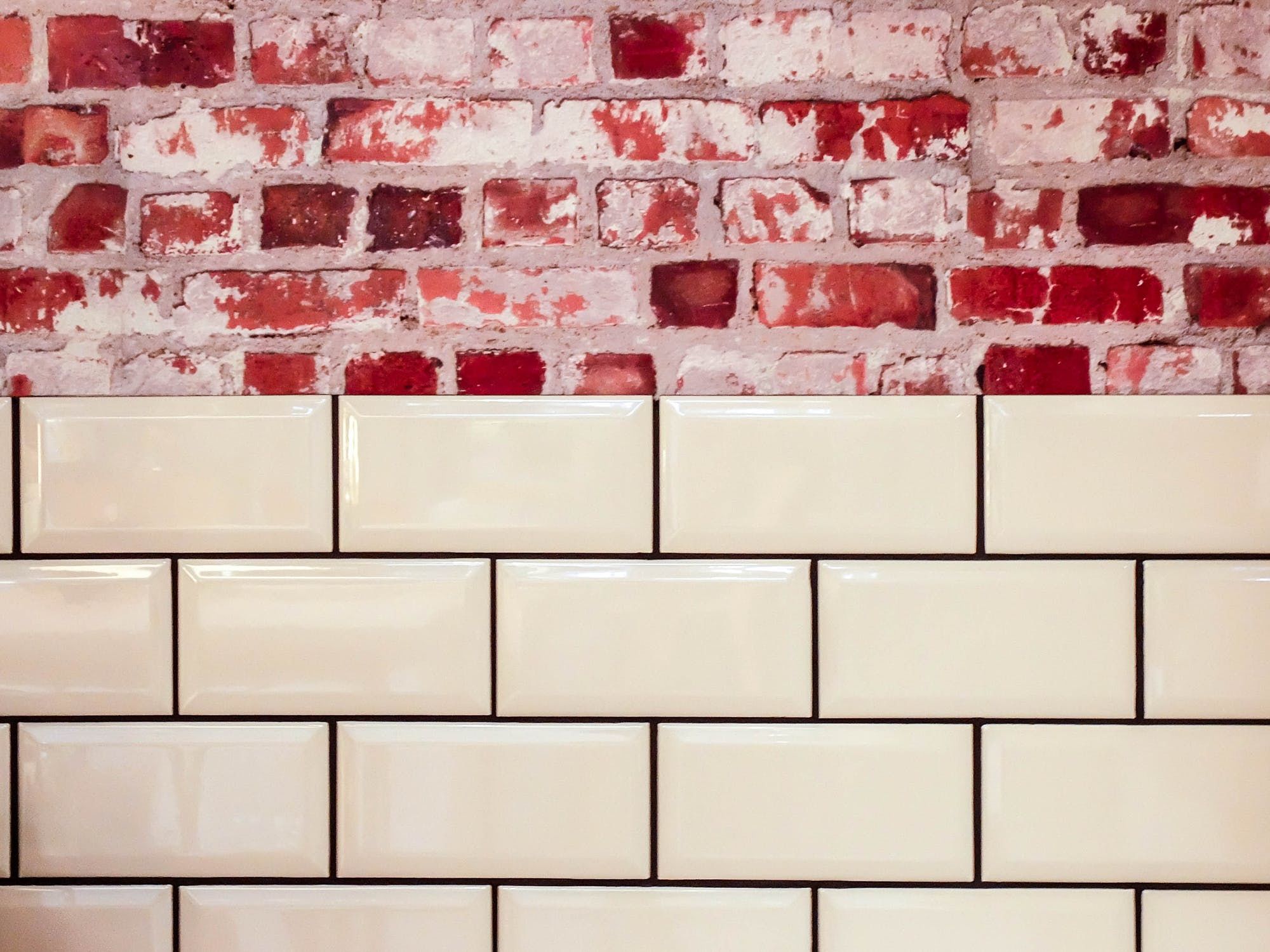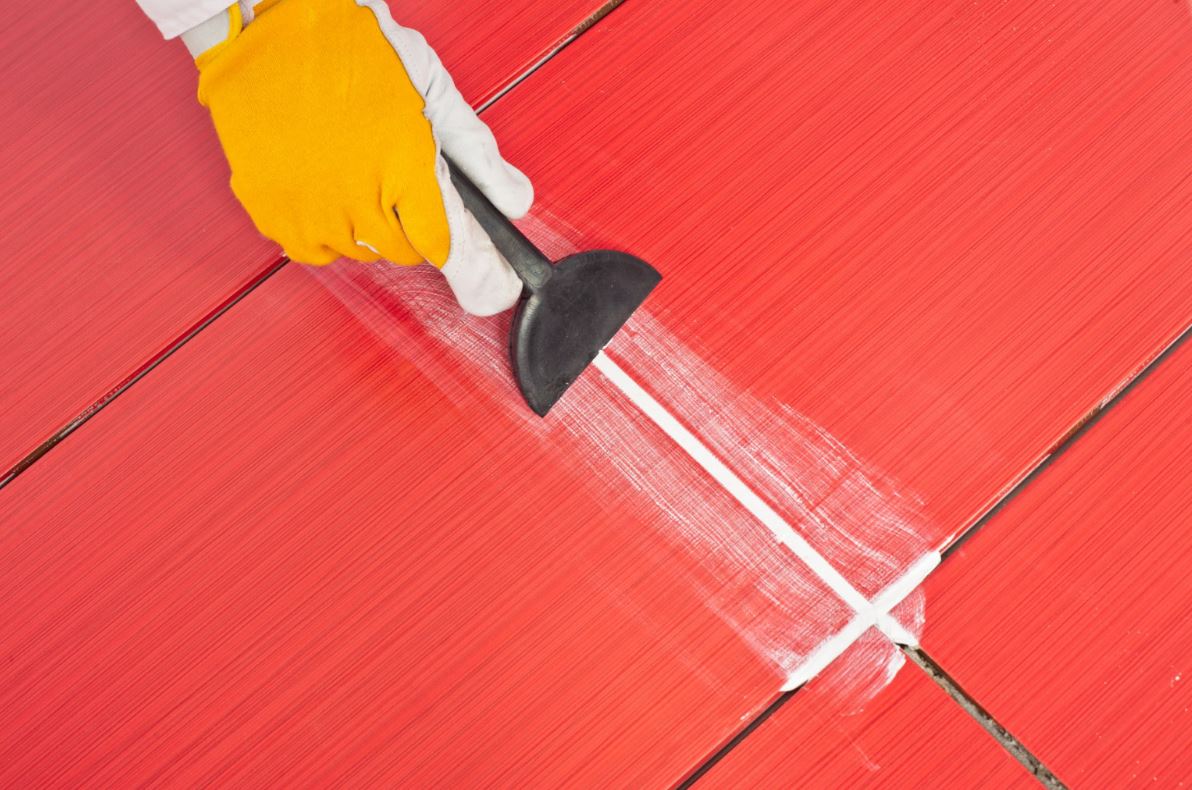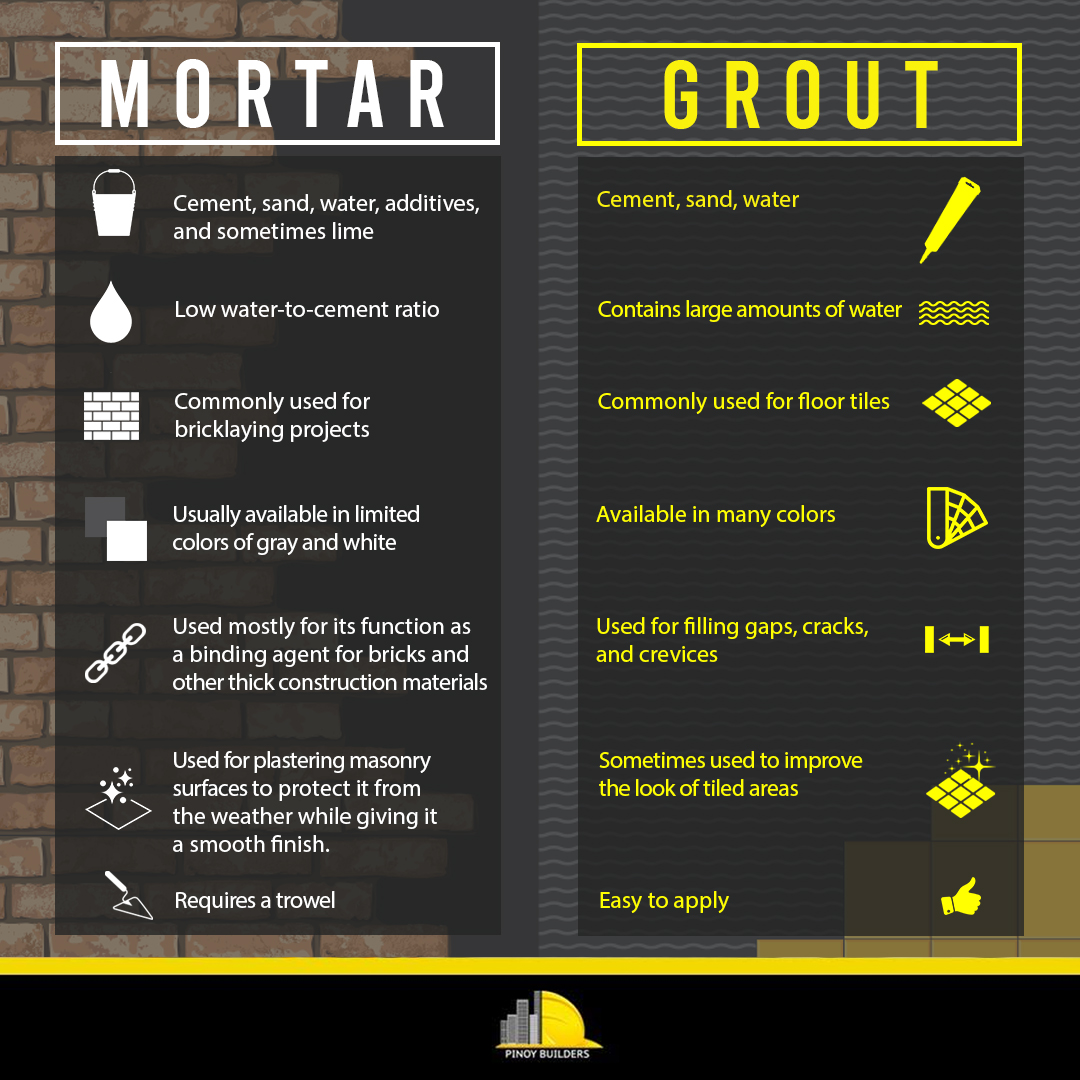Mortar and grout are cement-based products that are visually similar, but different in terms of aggregate composition and general utility. One is used for binding large, heavy materials, and the other is mostly used for filling gaps and adding a bit of color to one’s floors and walls.
You can refer to the guide below for more information on what they are, what their specialties are, and what not to use them for.
Mortar
Mortar is a binding agent used to combine building materials and establish structure. It also levels materials and helps distribute material load to prevent imbalance. Compared to grout, mortar is more rigid since it is formulated to be just dense enough to be spreadable.
Mortar is also used to strengthen concrete walls thanks to its ability to prevent unwanted cracks due to its high air content and generally durable properties. In fact, while it is considered to be weaker and not a suitable alternative to concrete, it is still the kind of material that’s difficult to destroy or weaken once it has hardened.
Ingredients:
Cement
Sand
Water (lower content than grout)
Additives (e.g. for flexibility, water resistance)
Commonly used for: Laying bricks or tiles.
Grout
Grout is made to be a gap filler for tiles and blocks. This adds extra adhesion and protects the tiles’ sides from chipping. It is designed to be poured so it can flow in-between spaces, thanks to the amount of water it has in its composition. Grout is also available in different colors to better complement the design of the tiles it is being used on.
DIY homeowners should keep in mind that, while grout is used to fill in gaps and sometimes cover up cracks and crevices, it should not be used as an alternative to mortar when binding construction materials together. The water content of grout makes it weak, making it ineffective for handling the pressure of weighted materials. Opt instead to use both for certain projects like laying down ceramic floor tiles. Mortar can provide a straight bed for the tiles, while grout is used to fill the gaps between each.
Ingredients:
Cement
Water (higher content than mortar)
Sand (but not always)
Commonly used for: Filling in spaces between materials, typically tiles.
Both mortar and grout are essentially made from the same ingredients, but what they differ in is the composition of their aggregates. If you need a quick guide to look at and save, worry not. We got you covered with a summary infographic guide:
![]()













